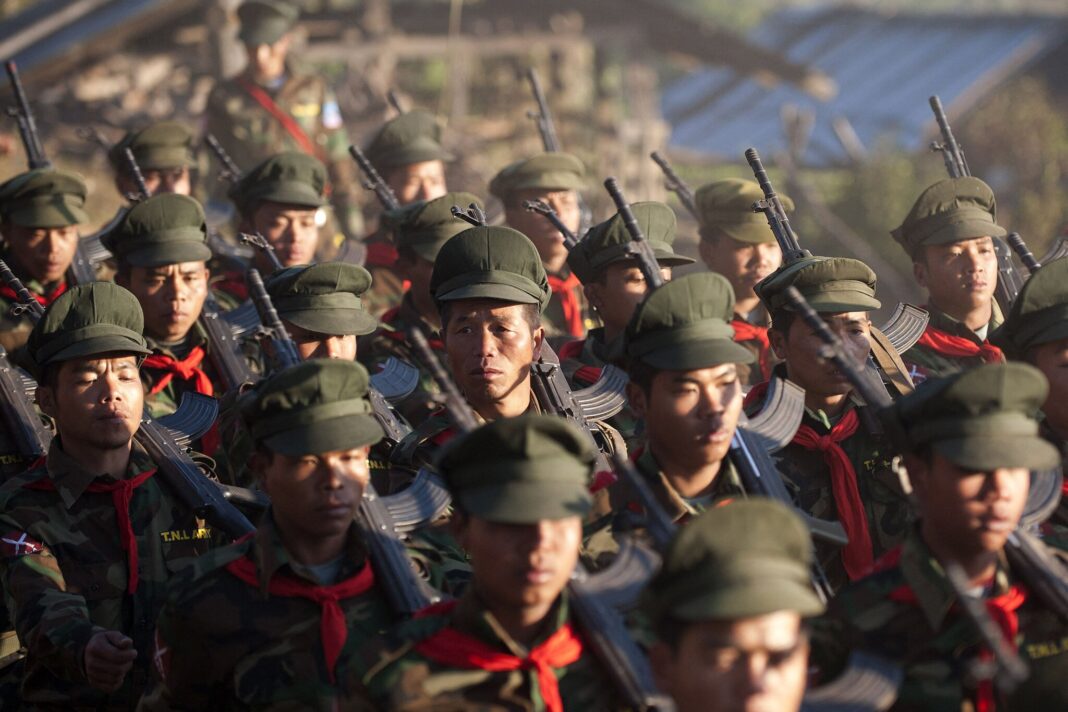Image: Credit…Ye Aung Thu/Agence France-Presse — Getty Images
Mr. Min Zin is a political scientist and the head of a policy think tank in Yangon, Myanmar. After taking part in protests against the country’s military in 1988 as a teenager, he went underground and was in exile for more than two decades.
Since the military takeover in Myanmar on Feb. 1, both the coup-makers and proponents of a return to democracy seem to be locked in an intolerable stalemate. The two sides continue to pursue unilateral strategies in the hope of prevailing over each other.
The Tatmadaw, as the Myanmar military is known, appears to believe it can force its way to and through a next election by way of brutal crackdowns, by dissolving the once-ruling National League for Democracy and by threatening to imprison Daw Aung San Suu Kyi, the country’s former de facto leader, for the rest of her life.
For its part, the anti-coup movement — largely a combination of N.L.D. supporters, Generation Z protesters and civil servants — has been shifting tactics away from predominantly peaceful demonstrations to more violent kinds of resistance. All around Myanmar a form of urban warfare has broken out in recent weeks — in or near the country’s largest city, Yangon; to the west in Chin State; to the east in Kayah and Shan States; and in the central region of Sagaing.
With more than 800 protesters killed to date and the prospect of foreign powers like China or Russia taking advantage of the crisis, Myanmar now looks to some like a land of lost options.
But it takes recognizing what this conflict really is about to detect who may now be able to move the needle.
This crisis isn’t just a battle between the military and civilians over the future of democracy. It is the latest evidence that the nation-building process in Myanmar, one of the most ethnically diverse states in the world, is still woefully incomplete more than seven decades after the country’s independence from Britain.
More than two-thirds of the people of Myanmar are ethnic Bamar, concentrated in the central lowlands, and they have long enjoyed privileged positions in society and with the state. Minority groups have suffered from limited access to resources or economic benefits; their political participation has been restricted — and not only under military rule.
Even during the last election, in November 2020, which was conducted under the democratic leadership of Ms. Aung San Suu Kyi’s N.L.D., some minority parties were essentially disenfranchised.
All ethnic armed groups have been fighting to obtain greater rights and resources for their people, but with different strategies and means. The Kachin, Karen and Shan, for example, have consistently said that a more equal version of federalism is a precondition for peace. But the United Wa State Army and the Arakan Army, two fearsome groups with ties to China, are calling for the creation of independent states within a new confederation.
A total of 10 ethnic armed groups have signed a nationwide cease-fire agreement put forward by a previous military-backed government in 2015 and later endorsed by Ms. Aung San Suu Kyi’s government. But there has been little progress toward a much-hoped-for comprehensive peace deal, even under the N.L.D., partly because of conflicting visions of what an inclusive federal Myanmar should look like.
The 10 ethnic armed organizations that signed the nationwide cease-fire agreement suspended group talks with the Tatmadaw after the coup, arguing that the junta was not a legitimate government. Yet they have mostly respected the cease-fire and, even while denouncing the military’s actions, have maintained individual lines of communication with it.
At the same time, most ethnic armed groups — among both signatories and nonsignatories of the cease-fire pact — have expressed support for the anti-coup protests. They have also welcomed the Committee Representing Pyidaungsu Hluttaw, a group set up by lawmakers ousted in the coup that seeks international recognition, and its interim national unity government. (The military has outlawed the committee and has called the interim government a terrorist group.)
It seems unlikely that Myanmar’s ethnic armed groups will all come together and present a common front against the junta, given their longstanding differences about goals, means and tactics. Even so, they arguably have not had this much political power in many years.
This is partly because the Tatmadaw depends on them more than ever to keep alive the peace process — its only possible source of legitimacy since the coup.

The military leadership is watching warily as the pro-democracy protests, mostly in urban areas, appear to be reinvigorating various local insurgencies at the country’s periphery. Some members of the democratic opposition have also taken shelter in areas controlled by battle-hardened ethnic armed organizations, for example in the Karen, Kayah, Shan and Kachin areas along Myanmar’s eastern and northern borders with Thailand and China.
